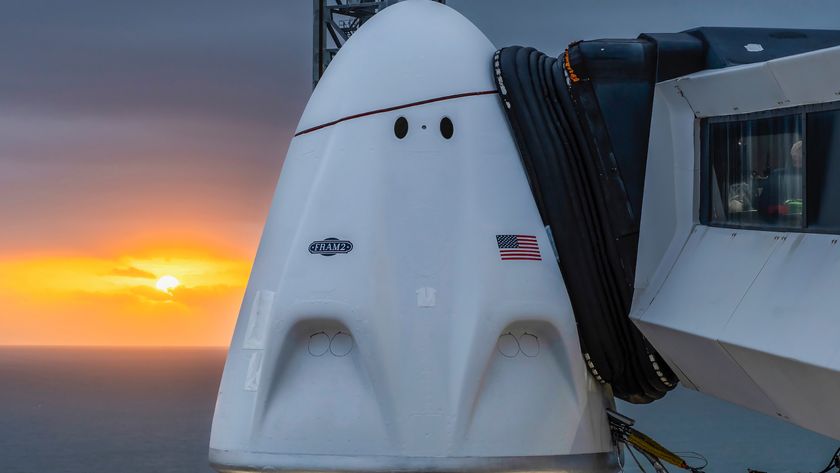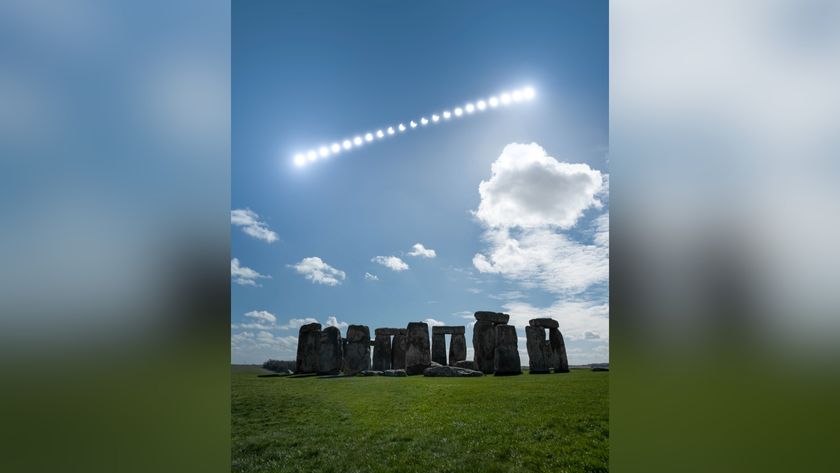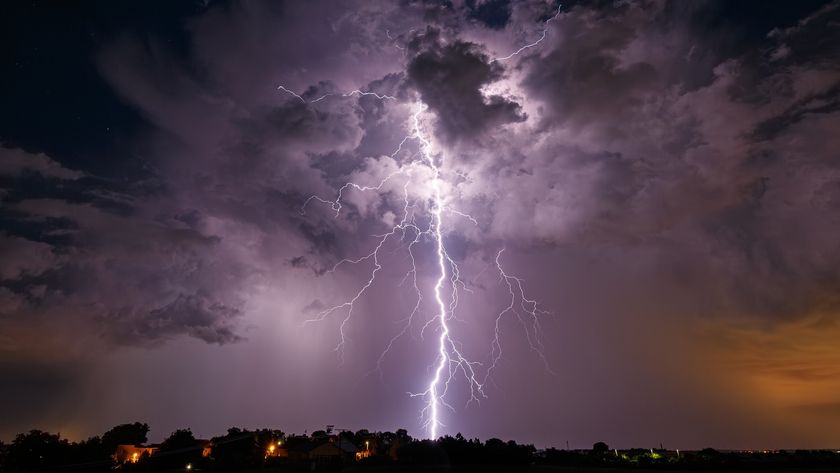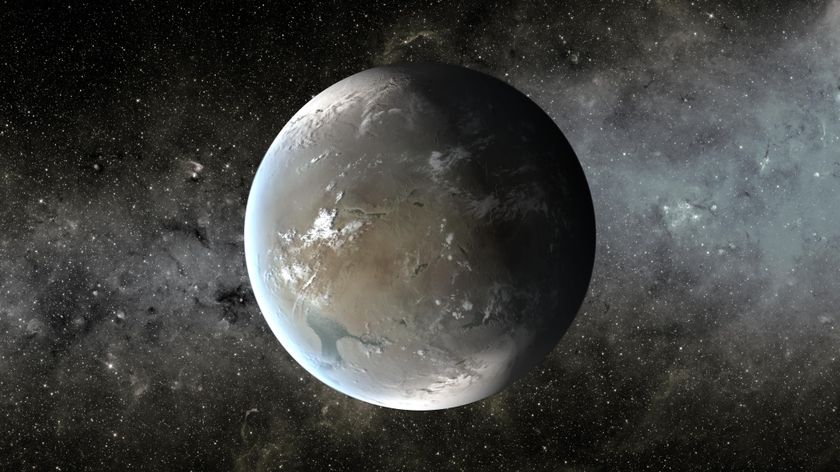NASA Erased First Moonwalk Tapes, But Restores Copies
After a three-year search for a set of data tapes that promised to offer an improved view of the first moonwalk by Neil Armstrong and Buzz Aldrin 40 years ago this month, NASA revealed on Thursday that the tapes were more than likely erased years ago and reused. But the agency then unveiled the next best thing:restored footage based on their best broadcast quality tapes.
The "lost tapes", as they came to be referred to by the press, first came to the public's attention in 2006 when a independent group led by members of the original lunar TV camera and tracking station teams realized that using modern technology the original mission telemetry tapes could be used to produce the highest quality television record of the first humans on the Moon.
Their problem was finding those tapes. The "slow-scan" tapes had been shipped from where they were originally recorded in Australia and California to Maryland, where over the course of four decades they were believed to be moved among tens of thousands of tapes from Goddard Space Flight Center to the National Archives in Suitland to then be recalled by Goddard in Greenbelt.
"There were 45 [Apollo 11] tapes approximately that were shipped toGoddard and the WNRC [Washington National Records Center] in amongst about four to five hundred thousand during the whole Apollo program. That is what we were looking for," explained Dick Nafzger, who led the team at Goddard, during a press conference.
Lost for good
A search of Goddard's archives, as well as other tape repositories was unsuccessful, strongly suggesting that the tapes were degaussed so that they could be reused to record telemetry from later missions, which would not be unusual for the day.
"What we found in the records and what will be detailed in a report to be issued was that in 1970 to 1974 we pulled out 40,000 boxes of tapes... five tapes to a box, that is 200,000 of these tapes, that was to support on-goingApollo missions, to support Apollo-Soyuz, to support Skylab. They were needed in the network," said Nafzger.
Get the Space.com Newsletter
Breaking space news, the latest updates on rocket launches, skywatching events and more!
"If the program said 'We no longer need this data' the procedures that were set by [the National Archives and Records Administration] and NASA were that you could reuse these tapes. So they were preserved for a period of time until the program, which was the owner of this data, was clearly able to tell you that it was no longer needed.
"That was the plan and that was what was done. In 1981 and 1982, we pulled out another 30,000. We then had Landsat in dire need of tapes in the network and we had the start of the shuttle program. Those tapes were pulled out and our records show that they were never returned.
"There is an inescapable conclusion that this team has reached and that is that these 45 tapes were included in the several hundred thousand that were pulled, recertified, degaussed and put back into the network," reported Nafzger. "The slow-scan recordings are no longer."
RestoringApollo 11?s moonwalk
Without the slow-scan tapes to work with, NASA turned to the next best source they had to produce what will be the best version of the Apollo 11 lunar television.
"The team of people who I work with, including myself obviously, was desperate to do something for history if we could," admitted Nafzger."Our goal [was] to try to restore and provide historically the best quality [video] we can for future generations, for anyone who wants to see this outstanding achievement of mankind."
Nafzger's team, which included Apollo-era engineers like himself who helped produce the 1969 live broadcast of the moonwalk, acquired the best of the broadcast-format video from a variety of sources for the restoration effort.
These included a copy of a tape recorded in Sydney, Australia at the videos witching center where downlinked television from Parkes and Honeysuckle Creek tracking stations was received for transmission to the United States; original broadcast tapes from the CBS News Archive recorded via direct microwave and landline feeds from Johnson Space Center in Houston; and kinescopes -- recordings of the television broadcast made by filming the picture from a video monitor -- found in film vaults at Johnson that had not been viewed for 36years.
NASA then contracted Lowry Digital of Burbank, Calif., which specializes in restoring aging Hollywood films, to take the highest quality video from these recordings and significantly enhance it using the company's proprietary software technology and other restoration techniques.
"There's a bit of closure for us at Lowry Digital in that our founder JohnLowry... he invented a technology called 'video noise reduction', which was actually applied on the Apollo 16 and 17 missions," reflected Mike Inchalik, president of Lowry Digital. "The live broadcasts from those missions was run through his electronic processing before being broadcast around the world to give cleaner, better looking pictures."
"Now we have the privilege of taking this new advanced technology that puts quality at a premium and tries to extract everything possible from motion sequences and bring it back to NASA one more time," said Inchalik.
Under the initial effort timed to coincide with the 40th anniversary of theApollo 11 mission, Lowry worked on 15 scenes representing the most significant moments of the three and a half hours that Armstrong and Aldrin spent on the lunar surface. NASA released the video Thursday at a news conference at the Newseum in Washington, DC.
The fully restored moonwalk is targeted for completion in September.
That the broadcast tapes needed to be restored to even approach the quality of the now no longer available slow scan tapes was a result of how they were recorded.
The black and white images of the two moonwalkers bounding around the moon were provided by a single small video camera aboard the lunar module. The camera used a non-standard format that commercial television could not broadcast.
NASA used a converter to optically and electronically adapt these images to aU.S. broadcast TV signal. The tracking stations converted the signals and transmitted them using microwave links, Intelsat communications satellites, andAT&T analog landlines to Mission Control. By the time the images appeared on television, they were substantially degraded.
Degraded or not, the fact that there was television from the Moon greatly impressed on of the "stars" of the broadcast, Neil Armstrong.
"I remember all the preflight testing that we were doing on that little black and white image TV camera. In all that testing, I never saw a picture successfully transmitted but the chaps assured us that it would and in fact work," wrote Armstrong in an excerpt from a letter that was read during the press conference announcing the restored footage. "I was probably the most surprised person in the human race when mission control announced they were getting a picture. So, I was never concerned that the picture quality was less than optimum. I was just amazed that there was any picture at all."
Copyright 2009 collectSPACE.com. All rights reserved.
Join our Space Forums to keep talking space on the latest missions, night sky and more! And if you have a news tip, correction or comment, let us know at: community@space.com.

Robert Pearlman is a space historian, journalist and the founder and editor of collectSPACE.com, a daily news publication and community devoted to space history with a particular focus on how and where space exploration intersects with pop culture. Pearlman is also a contributing writer for Space.com and co-author of "Space Stations: The Art, Science, and Reality of Working in Space” published by Smithsonian Books in 2018.In 2009, he was inducted into the U.S. Space Camp Hall of Fame in Huntsville, Alabama. In 2021, he was honored by the American Astronautical Society with the Ordway Award for Sustained Excellence in Spaceflight History. In 2023, the National Space Club Florida Committee recognized Pearlman with the Kolcum News and Communications Award for excellence in telling the space story along the Space Coast and throughout the world.









